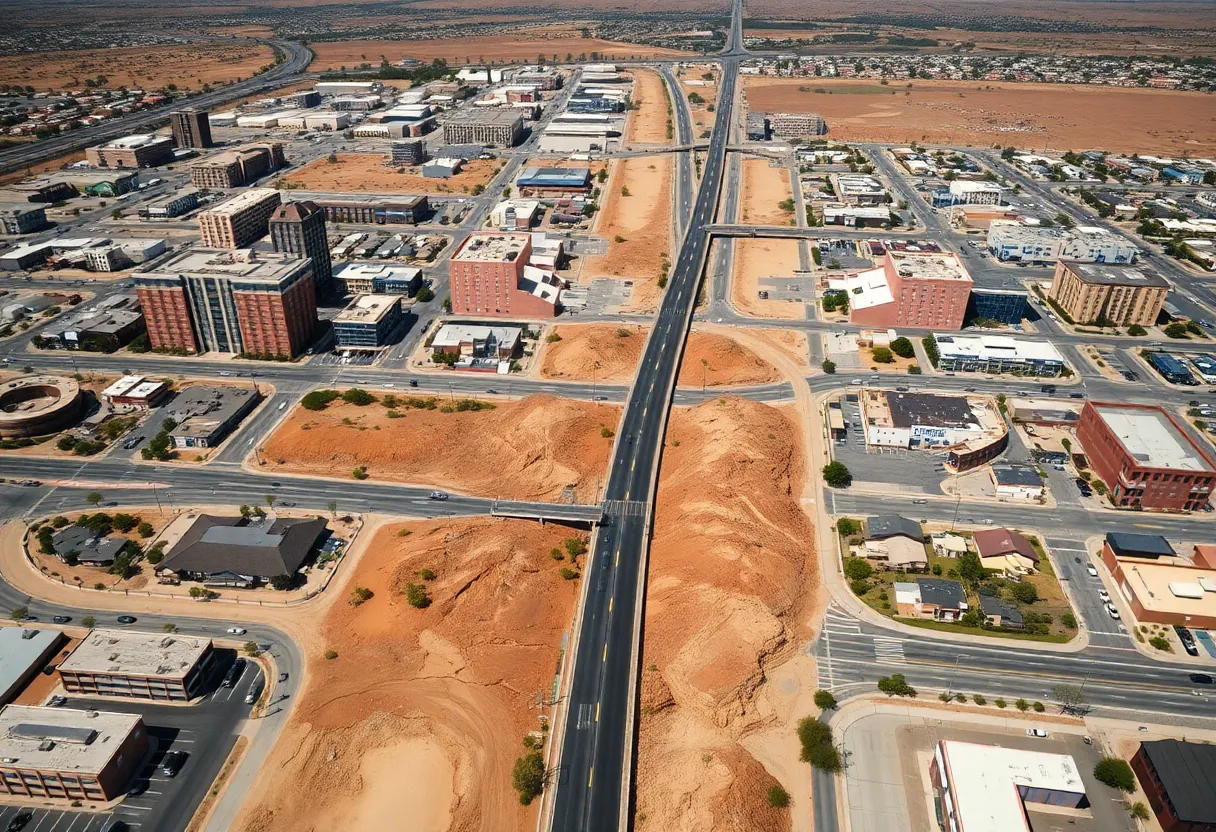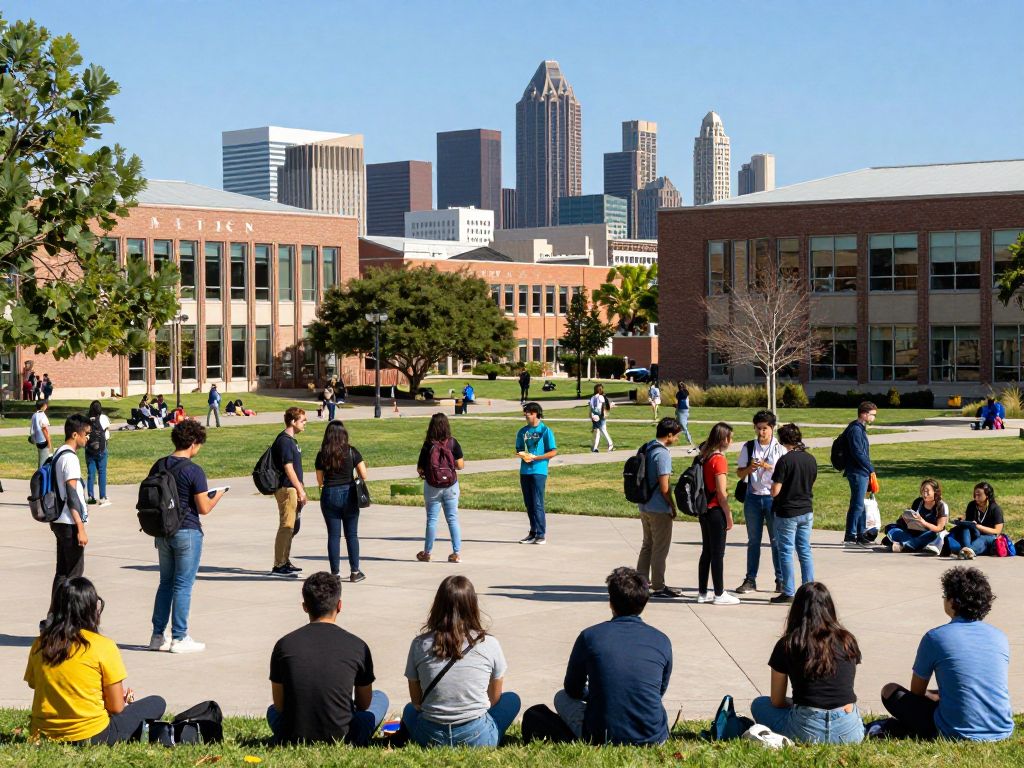News Summary
A recent study reveals that Phoenix is sinking at an alarming rate of one millimeter per year due to land subsidence, primarily caused by groundwater depletion. This phenomenon poses significant risks to infrastructure, with early signs of damage already appearing. Areas such as the West Valley are particularly vulnerable, complicating the challenges of urban growth and water resource management. Experts urge municipalities to develop strategies for preserving infrastructure amidst these escalating risks and consider the implications of climate change on water availability.
Phoenix is sinking at an alarming rate of approximately one millimeter per year, according to a new study that highlights the growing risks to infrastructure in the area. This study, titled “Land Subsidence Risk to Infrastructure in US Metropolises,” reveals that 25 out of the 28 most populous cities in the United States are experiencing some level of land subsidence, a phenomenon where the ground sinks unevenly due to various factors.
Researchers indicate that a significant 80% of land subsidence is attributed to groundwater withdrawals. As cities expand and populations grow, reliance on underground aquifers for water has intensified. Depleting these vital resources leads to a reduction in ground pressure, resulting in sinking land. In Phoenix, infrastructure such as roads, buildings, bridges, and dams faces potential compromise due to this subsidence. Early warning signs including cracks in walls, uneven floors, and warped roads have begun to surface as residents and city planners grapple with these challenges.
The study points to the Valley region as particularly vulnerable, with notable risk levels found in areas like West Valley, particularly in cities such as Avondale, Tolleson, and Buckeye, as well as in northern Phoenix—especially west of Interstate 17. These areas, already facing substantial growth, may see the effects of subsidence more severely as groundwater extraction continues.
Historical Context and Previous Trends
Historically, farming practices in the Valley prior to the 1980s have also contributed to land subsidence due to excessive water usage. Since the implementation of conservation rules in 1980, regulations have been enacted to mitigate groundwater usage, curbing the rate of subsidence to some extent. However, current trends still show significant vulnerabilities as the population grows and climate change possibly exacerbates water scarcity.
The Implications for Infrastructure
Land subsidence poses a considerable risk to infrastructure which is crucial for daily life and commerce in the city. Roads may become distorted, buildings may suffer from structural deficiencies, and bridges could be at risk of failing if not properly maintained and assessed. Experts emphasize that municipalities need to include considerations for subsidence in their planning and zoning efforts, as well as develop strategies for flood preparedness.
To inform this study, data collected by researcher Manoochehr Shirzaei approximately a decade ago formed the basis for these findings. The need for continuous monitoring and community engagement has been highlighted, alongside calls for risk assessments to further understand and address the hazards posed by subsidence.
Future Considerations
Challenges such as aquifer recharge face skepticism due to Arizona’s existing water scarcity issues. Without effective water management and a commitment to sustainable practices, the state risks intensifying the problem of subsidence in the coming years. As climate change leads to unpredictable weather patterns, the stress on water resources and the infrastructure that relies on them will likely increase, putting communities at risk.
As cities like Phoenix continue to grow and develop, embracing robust systems for groundwater management and continuous monitoring of subsidence trends will be vital in securing the integrity of infrastructure and ensuring safety for residents and visitors alike.
Deeper Dive: News & Info About This Topic
HERE Resources
Phoenix Implements New Zoning Regulations for Data Centers
Phoenix Faces Groundwater-Related Sinking Risks
Phoenix Faces Groundwater Crisis as City Sinks
Surprising Struggles of Arizona’s Alfalfa Farmers Amid Tariffs and Water Woes
Arizona Lawmakers Take Action as Water Shortages Loom
Additional Resources
- KTAR News
- Axios
- Phoenix New Times
- The New York Times
- AZCentral
- Wikipedia: Land Subsidence
- Google Search: land subsidence Phoenix
- Google Scholar: land subsidence Phoenix
- Encyclopedia Britannica: Subsidence
- Google News: Phoenix sinking

Author: STAFF HERE PHOENIX WRITER
The PHOENIX STAFF WRITER represents the experienced team at HEREPhoenix.com, your go-to source for actionable local news and information in Phoenix, Maricopa County, and beyond. Specializing in "news you can use," we cover essential topics like product reviews for personal and business needs, local business directories, politics, real estate trends, neighborhood insights, and state news affecting the area—with deep expertise drawn from years of dedicated reporting and strong community input, including local press releases and business updates. We deliver top reporting on high-value events such as the Waste Management Phoenix Open, Cactus League Spring Training, and Arizona State Fair. Our coverage extends to key organizations like the Greater Phoenix Chamber of Commerce and Visit Phoenix, plus leading businesses in technology and healthcare that power the local economy such as Intel and Banner Health. As part of the broader HERE network, including HERETucson.com, we provide comprehensive, credible insights into Arizona's dynamic landscape.





